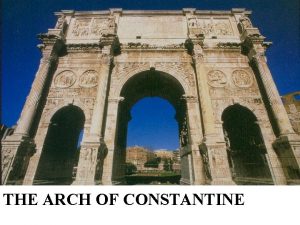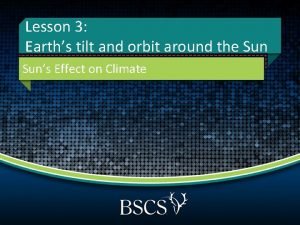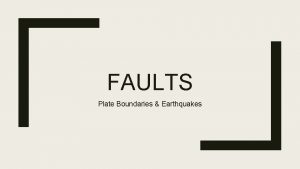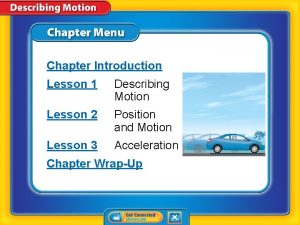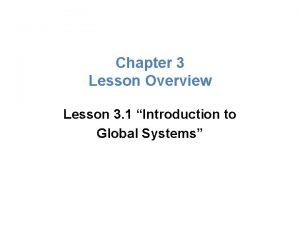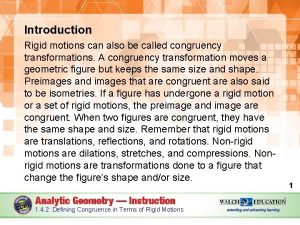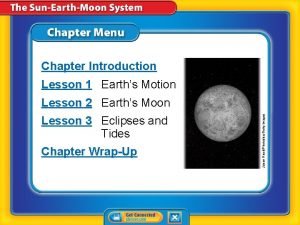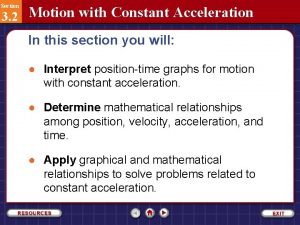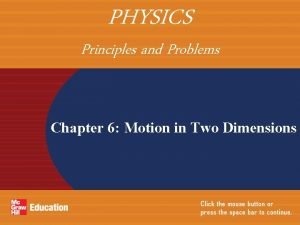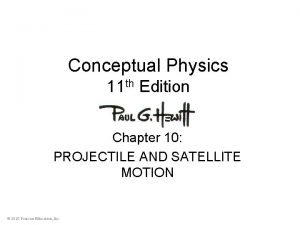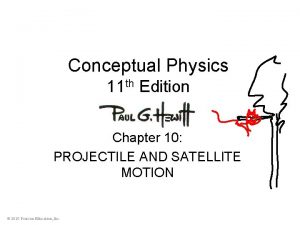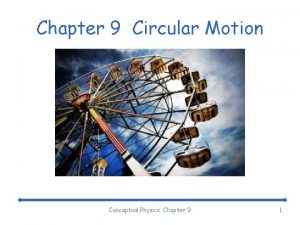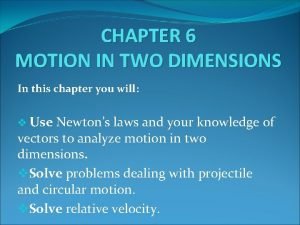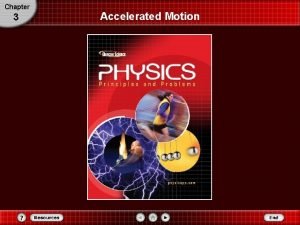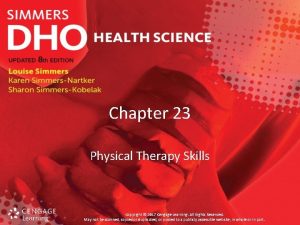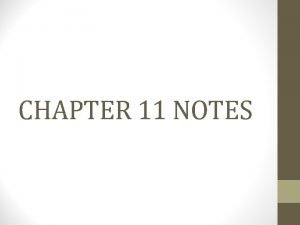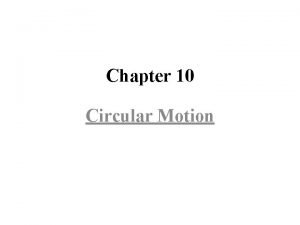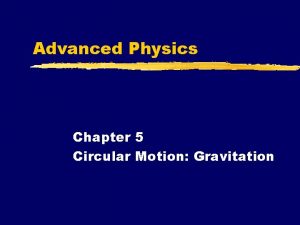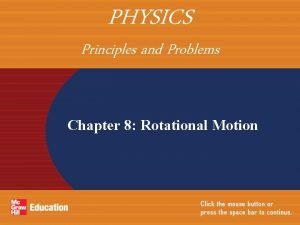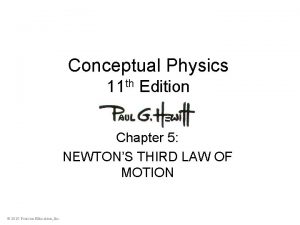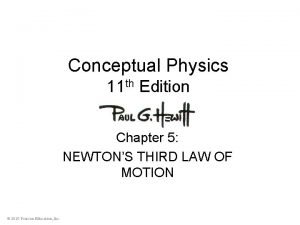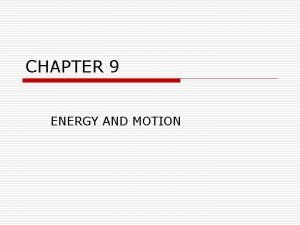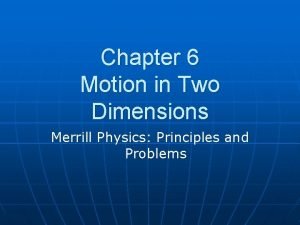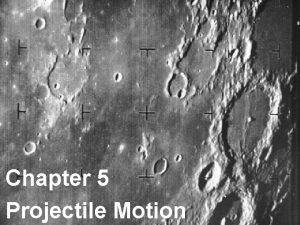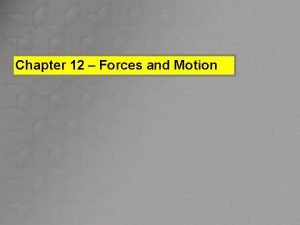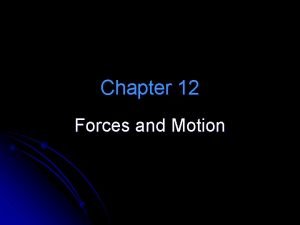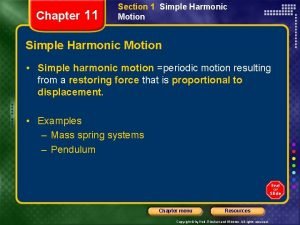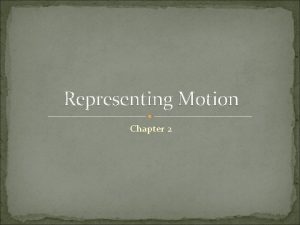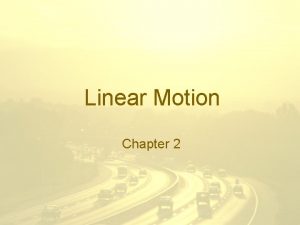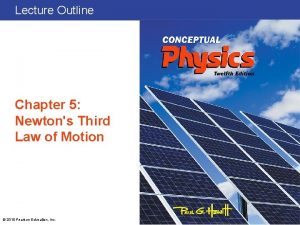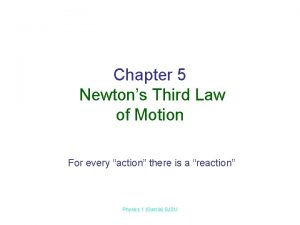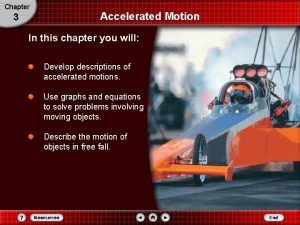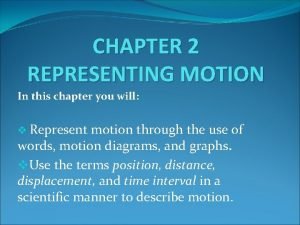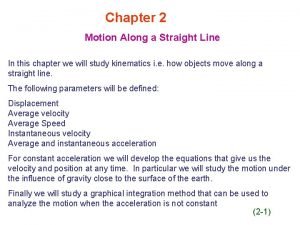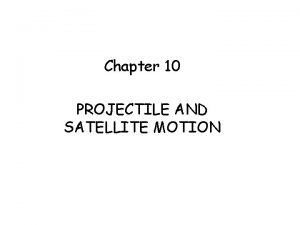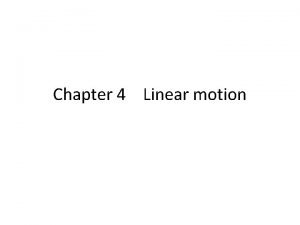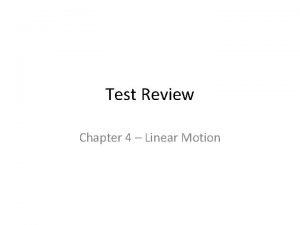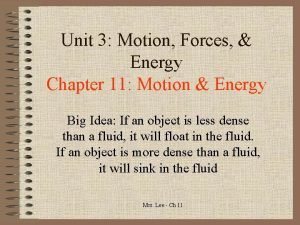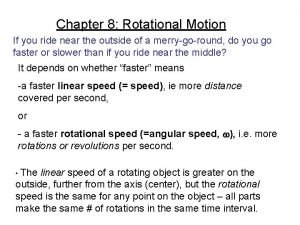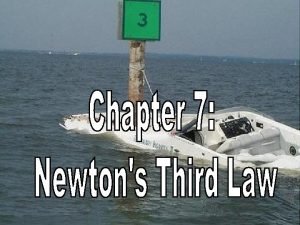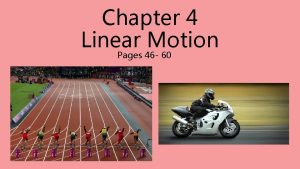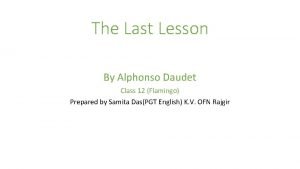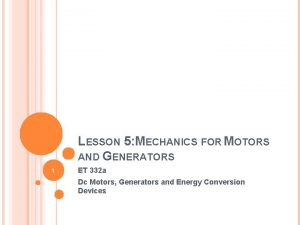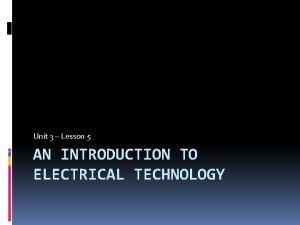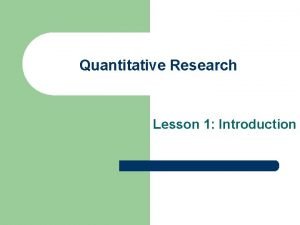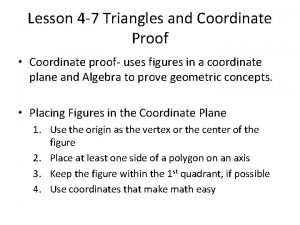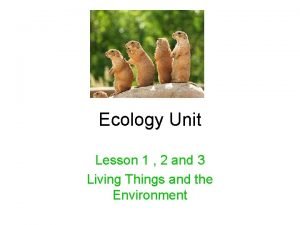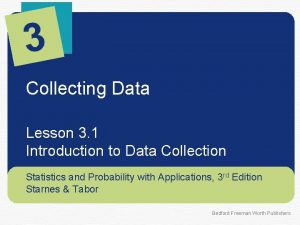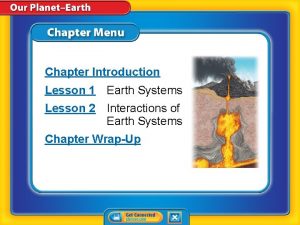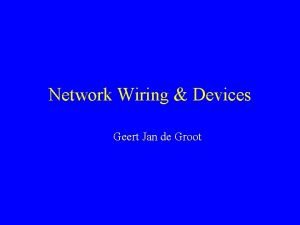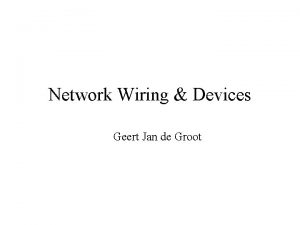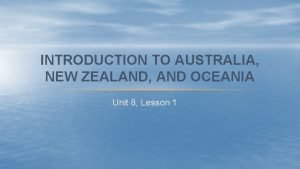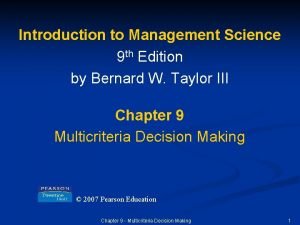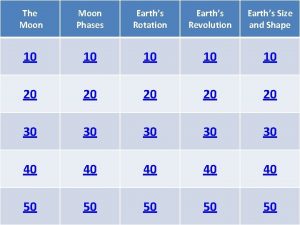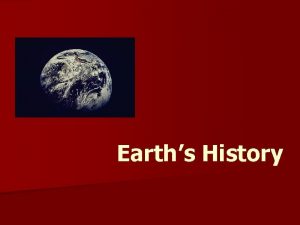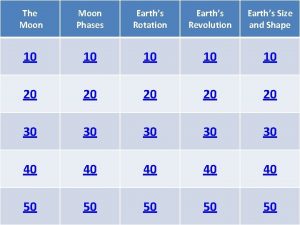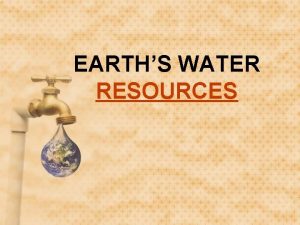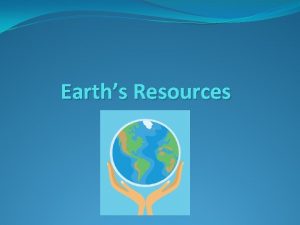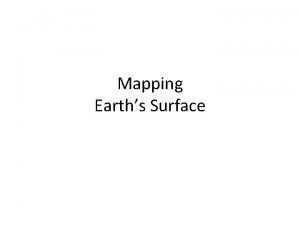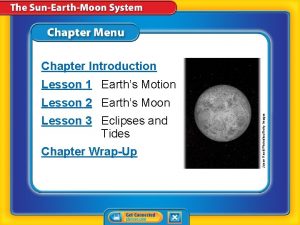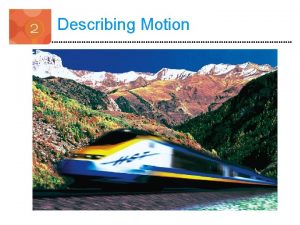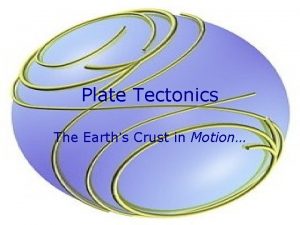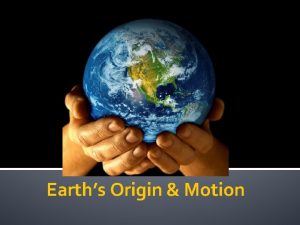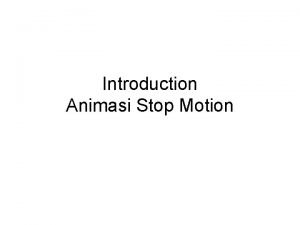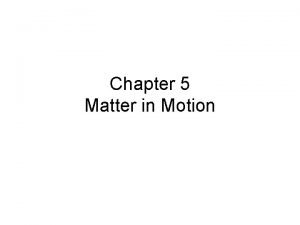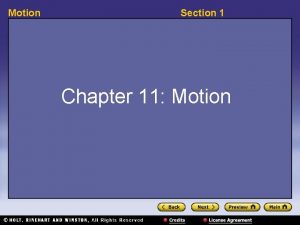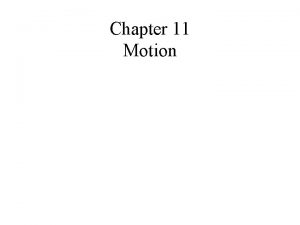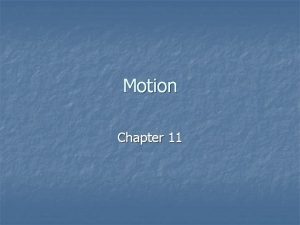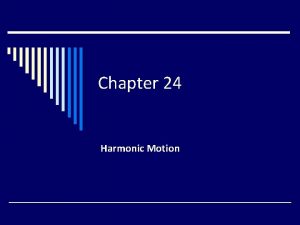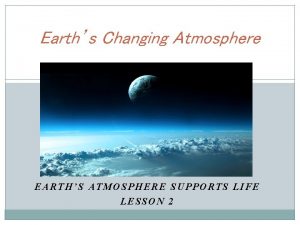Chapter Introduction Lesson 1 Earths Motion Lesson 3






































































































- Slides: 102

Chapter Introduction Lesson 1 Earth’s Motion Lesson 3 Eclipses and Tides Chapter Wrap-Up Jason Reed/Photodisc/Getty Images Lesson 2 Earth’s Moon

What natural phenomena do the motions of Earth and the Moon produce?

What do you think? Before you begin, decide if you agree or disagree with each of these statements. As you view this presentation, see if you change your mind about any of the statements.

Do you agree or disagree? 1. Earth’s movement around the Sun causes sunrises and sunsets. 2. Earth has seasons because its distance from the Sun changes throughout the year. 3. The Moon was once a planet that orbited the Sun between Earth and Mars.

Do you agree or disagree? 4. Earth’s shadow causes the changing appearance of the Moon. 5. A solar eclipse happens when Earth moves between the Moon and the Sun. 6. The gravitational pull of the Moon and the Sun on Earth’s oceans causes tides.

Earth’s Motion • How does Earth move? • Why is Earth warmer at the equator and colder at the poles? • Why do the seasons change as Earth moves around the Sun?

Earth’s Motion • orbit • solstice • revolution • equinox • rotation axis

Earth and the Sun • The nearest star to Earth is the Sun. • The Sun is approximately 150 million km from Earth.

Earth and the Sun (cont. ) Earth moves around the Sun in a nearly circular path.

Earth and the Sun (cont. ) • The path an object follows as it moves around another object is an orbit. • The motion of one object around another object is called revolution. • Earth makes one complete revolution around the Sun every 365. 24 days.

Earth and the Sun (cont. ) What produces Earth’s revolution around the Sun?

Earth and the Sun (cont. ) Earth orbits the Sun because the Sun’s gravity pulls on the Earth.

Earth and the Sun (cont. ) • A spinning motion is called rotation. • The line on which an object rotates is the rotation axis. • The tilt of Earth’s rotation axis is always in the same direction by the same amount. • During half of Earth’s orbit, the north end of the rotation axis is toward the Sun and during the other half the north end of the rotation axis is away from the Sun.

Temperature and Latitude Because Earth’s surface is curved, different parts of Earth’s surface receive different amounts of the Sun’s energy.

Temperature and Latitude (cont. ) Relative to the direction of a beam of sunlight, Earth’s surface tends to become more tilted as you move away from the equator. Why is Earth warmer at the equator and colder at the poles?

Temperature and Latitude (cont. ) The energy in a beam of sunlight tends to become more spread out the farther you travel from the equator

Temperature and Latitude (cont. ) Regions near the poles receive less energy than regions near the equator, which means Earth is colder at the poles and warmer at the equator.

Seasons During one half of Earth’s orbit, the north end of the rotation axis is toward the Sun.

Seasons (cont. ) • Due to Earth’s tilt, the northern hemisphere receives more solar energy. • Temperatures increase in the northern hemisphere and decrease in the southern hemisphere. • This is when spring and summer happen in the northern hemisphere, and fall and winter happen in the southern hemisphere.

During the other half of Earth’s orbit, the north end of the rotation axis is away from the Sun.

Seasons (cont. ) • Due to Earth’s tilt, the southern hemisphere receives more solar energy. • Temperatures decrease in the northern hemisphere and increase in the southern hemisphere. • This is when fall and winter happen in the northern hemisphere, and spring and summer happen in the southern hemisphere.

Seasons (cont. ) How does the tilt of Earth’s rotation axis affect Earth’s weather?

Seasons (cont. ) There are four days each year when the direction of Earth’s rotation axis is special relative to the Sun.

Seasons (cont. ) A solstice is a day when Earth’s rotation axis is the most toward or away from the Sun.

Seasons (cont. ) An equinox is a day when Earth’s rotation axis is leaning along Earth’s orbit, neither toward nor away from the Sun.

Seasons (cont. ) equinox from Latin equinoxium, means “equality of night and day”

Seasons (cont. ) The Sun’s apparent path through the sky in the northern hemisphere is lowest on the December solstice and highest on the June solstice.

• The gravitational pull of the Sun causes Earth to revolve around the Sun in a near-circular orbit.

• Earth’s rotation axis is tilted and always points in the same direction in space.

• Equinoxes and solstices are days when the direction of Earth’s rotation axis relative to the Sun is special.

Which body’s gravitational pull causes the Earth to orbit the Sun? A. Earth B. Sun C. Moon D. none of these

Relative to the direction of a beam of sunlight, what happens to Earth’s surface as you move away from the equator? A. The surface becomes less tilted. B. The surface becomes flat. C. The surface becomes more tilted. D. There is no change in the relationship.

Which term refers to the motion of one object around another object? A. orbit B. rotation C. rotation axis D. revolution

Do you agree or disagree? 1. Earth’s movement around the Sun causes sunrises and sunsets. 2. Earth has seasons because its distance from the Sun changes throughout the year.

Earth’s Moon • How does the Moon move around Earth? • Why does the Moon’s appearance change?

Earth’s Moon • maria • phase • waxing phase • waning phase

Seeing the Moon You only see the Moon because light from the Sun reflects off the Moon and into your eyes.

The Moon’s Formation According to the giant impact hypothesis, shortly after Earth formed about 4. 6 billion years ago, an object about the size of the planet Mars collided with Earth.

The Moon’s Formation (cont. ) The impact ejected vaporized rock that formed a ring around Earth.

The Moon’s Formation (cont. ) Eventually, the material in the ring cooled and clumped together and formed the Moon.

The Moon’s Formation (cont. ) • The surface of the Moon was shaped early in its history. • Moon’s craters were formed when objects from space crashed into the Moon.

The Moon’s Formation (cont. ) The large, dark, flat areas on the Moon are called maria from Latin mare, means “sea”

The Moon’s Formation (cont. ) • When the maria formed, lava flowed up through the Moon’s crust and solidified, covering many of the Moon’s craters and other features. • The light-colored highlands are too high for the lava that formed the maria to reach.

The Moon’s Motion • The Moon rotates as it revolves around Earth. • One complete rotation of the Moon takes 27. 3 days, meaning the Moon makes one rotation in the same amount of time that it makes one revolution around Earth.

The Moon’s Motion (cont. ) What produces the Moon’s revolution around Earth?

The Moon’s Motion (cont. ) • Because the Moon takes the same amount of time to orbit Earth and make one rotation, the same side of the Moon is always facing Earth. • This side of the Moon is called the near side. • The side of the Moon that cannot be see from Earth is called the far side of the moon.

The Moon’s Motion (cont. )

Phases of the Moon The lit part of the Moon or a planet that can be seen from Earth is called a phase Science Use how the Moon or a planet is lit as seen from earth Common Use a part of something or a stage of development

The motion of the Moon around Earth causes the phase of the Moon to change. Jason Reed/Photodisc/Getty Images


Phases of the Moon (cont. ) What produces the phases of the Moon?

Phases of the Moon (cont. ) • The sequences of phases is the lunar cycle. • During the waxing phases, more of the Moon’s near side is lit each night. • During the waning phases, less of the Moon’s near side is lit each night.

Phases of the Moon (cont. )

• According to the giant impact hypothesis, a large object collided with Earth about 4. 5 billion years ago to form the Moon.

• The Moon’s phases change in a regular pattern during the Moon’s lunar cycle. Jason Reed/Photodisc/Getty Images • Features like maria, craters, and highlands formed on the Moon’s surface early in its history.

What features of the moon were formed when objects from space crashed into it? A. maria B. craters C. highlands D. phases

What term is given to the side of the Moon always facing Earth? A. far side B. phase C. near side D. maria

Which of these is characterized by more of the Moon’s near side being lit each night? A. waxing phase B. waning phase C. lunar cycle D. full moon

Do you agree or disagree? 3. The Moon was once a planet that orbited the Sun between Earth and Mars. 4. Earth’s shadow causes the changing appearance of the Moon.

Eclipses and Tides • What is a solar eclipse? • What is a lunar eclipse? • How do the Moon and the Sun affect Earth’s oceans?

Eclipses and Tides • umbra • penumbra • solar eclipse • lunar eclipse • tide

Shadows—the Umbra and the Penumbra Light from the Sun and other wide sources cast shadows with two distinct parts.

Shadows—the Umbra and the Penumbra (cont. ) • The umbra is the central, darker part of a shadow where light is totally blocked. • The penumbra is the lighter part of a shadow where light is partially blocked.

Shadows—the Umbra and the Penumbra (cont. ) penumbra from Latin paene, means “almost”; and umbra, means “shade, shadow”

Solar Eclipses • During the new moon phase, Earth, the Moon, and the Sun are lined up and the Moon casts a shadow on Earth's surface. • When the Moon’s shadow appears on Earth’s surface, a solar eclipse is occurring.

Solar Eclipses (cont. ) Why does a solar eclipse occur only during a new moon?

During a total solar eclipse, the Moon appears to cover the Sun completely. You can only see a total solar eclipse from within the Moon’s umbra.

Solar Eclipses (cont. ) • You can see a partial solar eclipse from within the Moon’s much larger penumbra. • The Sun’s appearance changes during an eclipse as the moon moves in the sky.

The Moon’s orbit is tilted slightly compared to Earth’s orbit. As a result, during most new moons, Earth is either above or below the Moon’s shadow.

Lunar Eclipses A lunar eclipse occurs when the Moon moves into Earth’s shadow.

Lunar Eclipses (cont. ) When the entire Moon moves through Earth’s umbra, a total lunar eclipse occurs.

Lunar Eclipses (cont. ) • When only part of the Moon passes through Earth’s umbra, a partial lunar eclipse occurs. • Lunar eclipses can only occur during a full moon phase, when the Moon and the Sun are on opposite sides of Earth.

Lunar Eclipses (cont. ) When can a lunar eclipse occur?

Tides • A tide is the daily rise and fall of sea level. • It is primarily the Moon’s gravity that causes Earth’s oceans to rise and fall twice each day. • The Moon’s gravity is slightly stronger on the side of Earth closer to the Moon and slightly weaker on the side of Earth opposite the Moon.

Tides (cont. ) The gravitational differences cause tidal bulges in the oceans on opposite sides of Earth.

Tides (cont. ) • High tides occur at the tidal bulges, and low tides occur between them. • Because the Sun is so far away from Earth, its effect on tides is about half that of the Moon.

Tides (cont. ) Spring tides occur during the full moon and new moon phases, when the Sun’s and the Moon’s gravitational effects combine and produce higher high tides and lower low tides.

Tides (cont. ) A neap tide occurs a week after a spring tide, when the Sun, Earth, and the Moon form a right angle and the Sun’s effect on tides reduces the Moon’s effect.

Tides (cont. ) Why is the Sun’s effect on tides less than the Moon’s effect?

• Shadows from a wide light source have two distinct parts.

• The Moon’s shadow produces solar eclipses. Earth’s shadow produces lunar eclipses.

• The positions of the Moon and the Sun in relation to Earth cause gravitational differences that produce tides.

If the Moon’s shadow appears on Earth’s surface, which of these is occurring? A. lunar eclipse B. tide C. solar eclipse D. neap tide

What causes Earth’s tides? A. the Moon’s gravity B. the Moon’s tilted orbit C. Earth’s gravity D. the Moon’s umbra

Which of these refers to the central, darker part of a shadow where light is totally blocked? A. umbra B. penumbra C. lunar eclipse D. tide

Do you agree or disagree? 5. A solar eclipse happens when Earth moves between the Moon and the Sun. 6. The gravitational pull of the Moon and the Sun on Earth’s oceans causes tides.

Key Concept Summary Interactive Concept Map Chapter Review Standardized Test Practice

Gravity causes objects in space to impact each other. Earth’s motion around the Sun causes seasons. The Moon’s motion around Earth causes phases of the Moon. Earth and the Moon’s motions together cause eclipses and ocean tides.

Lesson 1: Earth’s Motion • The gravitational pull of the Sun on Earth causes Earth to revolve around the Sun in a nearly circular orbit. • Areas on Earth’s curved surface become more tilted with respect to the direction of sunlight the farther you travel from the equator. This causes sunlight to spread out closer to the poles, making Earth colder at the poles and warmer at the equator.

Lesson 1: Earth’s Motion • As Earth revolves around the Sun, the tilt of Earth’s rotation axis produces changes in how sunlight spreads out over Earth’s surface. These changes in the concentration of sunlight cause the seasons.

Lesson 2: Earth’s Moon • The gravitational pull of Earth on the Moon makes the Moon revolve around Earth. The Moon rotates once as it makes one complete orbit around Earth. Jason Reed/Photodisc/Getty Images • The lit part of the Moon that you can see from Earth —the Moon’s phase—changes during the lunar cycle as the Moon revolves around Earth.

Lesson 3: Eclipses and Tides • When the Moon’s shadow appears on Earth’s surface, a solar eclipse occurs. • When the Moon moves into Earth’s shadow, a lunar eclipse occurs. • The gravitational pull of the Moon and the Sun on Earth produces tides, the rise and fall of sea level that occurs twice each day.

The line on which an object rotates is called what? A. orbit B. surface C. revolution D. rotation axis

What happens to temperatures in the northern hemisphere when the north end of the rotation axis is toward the Sun? A. increase B. stay the same C. decrease D. cannot be determined

Which is a day when Earth’s rotation axis is leaning along Earth’s orbit, neither toward nor away from the Sun? A. equinox B. solstice C. spring D. winter

Which of these is characterized by less of the Moon’s near side being lit at night? A. lunar cycle B. waning phase C. waxing phase D. lunar eclipse

Which of these refers to the lighter part of a shadow where light is partially blocked? A. umbra B. solar eclipse C. tide D. penumbra

What term refers to a day when Earth’s rotation axis is the most toward or away from the Sun? A. equinox B. fall C. spring D. solstice

What is the path an object follows as it moves around another object? A. revolution B. rotation axis C. orbit D. rotation

Which refers to the part of the Moon or a planet that can be seen from Earth? A. waning B. waxing C. phase D. lunar cycle

Which term refers to the daily rise and fall of sea level? A. eclipse B. umbra C. penumbra D. tide

During which does the Moon appear to cover the Sun completely? A. solar eclipse B. high tide C. lunar eclipse D. neap tide
 Chapter 2 motion section 1 describing motion answer key
Chapter 2 motion section 1 describing motion answer key Measuring motion
Measuring motion Chapter 2 section 1 describing motion answer key
Chapter 2 section 1 describing motion answer key The earths layer foldable
The earths layer foldable Earths roation
Earths roation Whats earths moon called
Whats earths moon called Biome near the equator
Biome near the equator Periodic table of elements families
Periodic table of elements families Basalt
Basalt Whats earths moon called
Whats earths moon called Whats the thickest layer of the earth
Whats the thickest layer of the earth Earths early atmosphere contained
Earths early atmosphere contained Lithosphere
Lithosphere Earths major crustal plates
Earths major crustal plates Earths orbit seasons
Earths orbit seasons Brown earth soil profile
Brown earth soil profile Study of earth's physical features
Study of earth's physical features Earth's honey
Earth's honey Whats the name of earths moon
Whats the name of earths moon Earths mantle
Earths mantle Earths crust
Earths crust Earths interior
Earths interior Spring earth tilt
Spring earth tilt Atmospheric definition
Atmospheric definition What is this shape
What is this shape Arch of constantine dimensions
Arch of constantine dimensions What does earths tilt do
What does earths tilt do Earths boundaries
Earths boundaries Earths 4 spheres
Earths 4 spheres Lesson 4 gravity and motion lesson review
Lesson 4 gravity and motion lesson review Describing motion worksheet answer key
Describing motion worksheet answer key Position and motion
Position and motion Describing motion chapter 1 lesson 1 answer key
Describing motion chapter 1 lesson 1 answer key Types of motion
Types of motion Shm formula
Shm formula An object in motion stays in motion
An object in motion stays in motion Motion section 1 describing motion
Motion section 1 describing motion Chapter 2 chapter assessment representing motion
Chapter 2 chapter assessment representing motion Chapter 3 lesson 1 introduction to global systems
Chapter 3 lesson 1 introduction to global systems Introduction to motion
Introduction to motion Introduction rigid motion or isometry
Introduction rigid motion or isometry Overall state of well being or total health
Overall state of well being or total health Earth's motion worksheet lesson 1 answers
Earth's motion worksheet lesson 1 answers Introduction paragraph structure
Introduction paragraph structure Unit 3 force motion energy answer key
Unit 3 force motion energy answer key Section 3 acceleration
Section 3 acceleration Physics principles and problems chapter 6 answers
Physics principles and problems chapter 6 answers Chapter 11 section 3 motion and force answer key
Chapter 11 section 3 motion and force answer key Chapter review motion part a vocabulary review answer key
Chapter review motion part a vocabulary review answer key Describing and measuring motion answer key
Describing and measuring motion answer key Tossed ball conceptual physics answers
Tossed ball conceptual physics answers Chapter 10 projectile and satellite motion
Chapter 10 projectile and satellite motion Circular motion conceptual physics
Circular motion conceptual physics Chapter 6 study guide motion in two dimensions
Chapter 6 study guide motion in two dimensions Chapter 6 motion in two dimensions
Chapter 6 motion in two dimensions Chapter 3 accelerated motion
Chapter 3 accelerated motion Chapter 23.1 performing range of motion exercises
Chapter 23.1 performing range of motion exercises Chapter 11 motion section 2 acceleration answer key
Chapter 11 motion section 2 acceleration answer key Chapter 10 circular motion
Chapter 10 circular motion Chapter 5 circular motion gravitation
Chapter 5 circular motion gravitation A child sits upright in a wagon which is moving
A child sits upright in a wagon which is moving Chapter 8 rotational motion answer key
Chapter 8 rotational motion answer key Conceptual physics chapter 5 newton's third law of motion
Conceptual physics chapter 5 newton's third law of motion Slightly tilted wings of airplanes deflect
Slightly tilted wings of airplanes deflect Conceptual physics chapter 3 linear motion
Conceptual physics chapter 3 linear motion Section 1 describing motion
Section 1 describing motion Chapter 6 motion in two dimensions
Chapter 6 motion in two dimensions When no air resistance acts on a projectile
When no air resistance acts on a projectile Chapter 2 motion in one dimension answer key
Chapter 2 motion in one dimension answer key Chapter 12 forces and motion
Chapter 12 forces and motion Chapter 12 forces and motion
Chapter 12 forces and motion Simple harmonic motion chapter 11
Simple harmonic motion chapter 11 Representing motion
Representing motion Chapter 2 linear motion
Chapter 2 linear motion Chapter 5 newton's third law of motion
Chapter 5 newton's third law of motion Site:slidetodoc.com
Site:slidetodoc.com Chapter 3 accelerated motion practice problems answers
Chapter 3 accelerated motion practice problems answers Chapter 2 representing motion
Chapter 2 representing motion Motion along the straight line
Motion along the straight line Chapter 10 projectile and satellite motion tossed ball
Chapter 10 projectile and satellite motion tossed ball Chapter 4 linear motion
Chapter 4 linear motion Linear motion in class test review answers
Linear motion in class test review answers Chapter 11 section 3 motion and force answer key
Chapter 11 section 3 motion and force answer key Chapter 8 rotational motion
Chapter 8 rotational motion Chapter 7 newton's third law of motion
Chapter 7 newton's third law of motion Chapter 4 linear motion
Chapter 4 linear motion Chapter 2 motion along a straight line
Chapter 2 motion along a straight line Alphonse daudet class 12
Alphonse daudet class 12 Lesson 5: introduction to generators
Lesson 5: introduction to generators Lesson 5: introduction to electrical devices
Lesson 5: introduction to electrical devices Lesson 1 introduction to quantitative research
Lesson 1 introduction to quantitative research 4-7 triangles and coordinate proof answers
4-7 triangles and coordinate proof answers Lesson 1 introduction to ecology answer key
Lesson 1 introduction to ecology answer key Lesson 3.1 introduction to data collection
Lesson 3.1 introduction to data collection Lesson 1: introduction to the earth
Lesson 1: introduction to the earth A christmas carol introduction lesson
A christmas carol introduction lesson Grootnetwork
Grootnetwork Geert jan de groot
Geert jan de groot Orientation level 1 lesson 8
Orientation level 1 lesson 8 Lesson 1 an introduction to oceania
Lesson 1 an introduction to oceania Lesson 1 waves answer key
Lesson 1 waves answer key Operations management introduction
Operations management introduction Introduction to management science solution
Introduction to management science solution

























